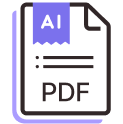
How to digitize customs documents
From ISF filings and CIPLs to BOLs and Customs Entry Summaries, importing goods involves standardizing, storing, and reconciling dozens of crucial data points for a single shipment. Making matters even more difficult, these documents rarely look the same — with data coming in various formats, currencies, languages, and file types. While every team would rather spend time identifying duty mitigation strategies than doing copy+paste work, operators are often too bogged down by manual data work to even think about strategic improvements to import operations.
Parabola automates customs document digitization by extracting key details from PDFs and emails, leveraging AI to structure data into a standardized format. Using a combination of OCR, AI, and computer vision, businesses can quickly extract critical fields like shipment values, HS codes, and tariff rates — ensuring accurate reporting and compliance. With automated workflows, teams can consolidate import data in real-time, analyze costs across shipments, and even flag discrepancies for duty refunds or classification optimizations.

Video overview
Why Parabola







As soon as we launched the first component of the automation, we saw an increase in our top-line compliance figure. It’s almost like every week we hit a new all time best.
What is customs document digitization?
Customs document digitization is the process of extracting, standardizing, and organizing data from import-related documents, such as commercial invoices, bills of lading, and entry summaries. By digitizing these records, businesses can improve customs compliance, automate duty calculations, and gain visibility into import costs — allowing for better financial and operational decisions.
How to digitize customs documents in Parabola?
- Pull customs documents into Parabola from sources like email attachments and PDF uploads using steps like Pull from inbound email or Pull from PDF file.
- Fine-tune the settings in your import step, adding example values and custom instructions to improve the results of your data extraction.
- Standardize extracted data using steps like Edit columns, Extract with AI, and Standardize with AI to ensure consistent formatting across multiple document types.
- Use steps like Add if/else column and Filter rows to identify any potential discrepancies.
- Export data to relevant systems using steps like Send to API, Send to Snowflake, and Email a file attachment to maintain audit trails and centralize data.
Tips for digitizing customs documents in Parabola?
- Invest early in fine-tuning your PDF parsing steps, providing many example values and instructions for improved results.
- Consolidate import records from multiple sources (PDFs, emails, APIs) into a single dataset for better analysis and tracking.
- Implement automated alerts for classification discrepancies or high-duty shipments to proactively manage import costs.
What other resources are available on customs document digitization?
- To start building your customs document digitization Flow, use the Template above and check out the Parabola University lesson on PDF parsing.
- Learn more about how to set up an auto-forwarding rule in Parabola here.




